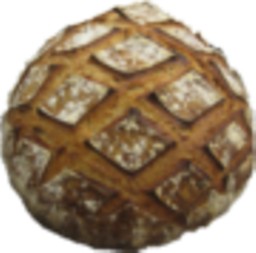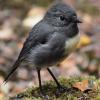
How to Shape and Score a Baguette: the Videos
I posted two great videos at my blog, about shaping and scoring a baguette. I was hoping to post them here but can't get the embedded videos from youtube to work, so just go to the link.

I posted two great videos at my blog, about shaping and scoring a baguette. I was hoping to post them here but can't get the embedded videos from youtube to work, so just go to the link.

When an Italian recipe calls for farina, to what are they referring? Is it a wheat flour or semolina? If semolina is it the coarser or actually durum flour?
I found a grissini recipe on youtube I would like to try, but it is all in Italian. I think I have everything figured out but the farina.
Thanks for any help. Terry R

Recently we have had a few posts on people having issues getting the No Knead Bread to turn out a wonderful as it should. Jim Lahey has just published a new book called "My Bread" that I thought might be fun to take a look at. It isn't an expensive book at $16.60 and has many variations on his original recipe as well as many popular variations of offerings at the Sullivan Street Bakery.
I thought I would start with the basic formula which is all Bread Flour. It almost came to pass but at the last minute I swapped out 5% of white for rye. I love what a small amount of rye does to a simple white flavor. All of Lahey's formulas call for 400 grams of flour and 300 grams of water and 2% salt. The variable is the yeast which runs from 1-3 grams depending on the additions. The resultant hydration is 75%.
One concern about the KNB process is that the chance of mixing a smooth silky dough with no lumps is diminished by minimal mixing and no kneading. After my initial mix, I went to check the dough after an hour and found many clumps of partially hydrated dough. I know that these clumps will result in inconsistency in the crumb. So, I deviated from the script and did a frissage, (squishing the dough with the heel of your hand while sliding it across the counter) which broke up the clumps. Now I have a smooth cool dough that will set at room temperature for at least 12 hours.
Somewhere along the way, the NKB process took a turn towards what I would call normal breads in that Lahey now wants us to do a second fermentation after a brief shaping. The book calls for flouring a towel and setting the bread in a bowl to "proof". I used a linen lined basket and let it proof for 2 hours.
Interestingly, the procedure calls for the final ferment (proof) to be done seams down and baked seams up. No slashing is called for so the bread expands on the weakness of the bottom seams from shaping. It worked pretty well on the two loaves I have done although I would have liked a better spring.
I baked the loaf in the Lodge Combo Cooker, 15 minutes covered and 15 open at 460F. The internal was just over 203F. I didn't get the wildly open crumb structure that is shown in the book image but it's very appropriate for the bread, and delicious.
There are several very interesting recipes in Chapter Three "Specialties of the House" that are on my to-do list. The Italian Stecca with tomatoes and garlic pressed in the top of a stick. Then the Beyond water section, there are several interesting selections. The carrot bread looks like it would be fun and tasty. It uses home made juice extracted from carrots for hydration. So here is my first crack at the new "My Bread".
Eric

Just a little course corn meal prevents scorching on the bottom.


Hello,
Today's bake was an experiment with multigrain, to see the difference between baking in a cold dutch oven, versus baking on my firebrick baking stone.
I've seen so many successful dutch oven bakes here on TFL - I wanted to give it a try!
The result: Very tasty! if not exactly pretty.
The baking stone loaf rose up an extra 1/2" compared to the 'cold dutch oven' loaf, which spread out more & didn't have as much oven spring/bloom from scoring.
Other variables: shaping was harder for the dutch oven loaf (fighting a sticky dough), and the dutch oven loaf was baked at a slightly lower temperature.
Crumb shot is from the 'cold dutch oven' loaf. The bottom loaf was baked on the baking stone.
I tasted a heavenly sourdough bread with sunflower, poppy and flax seeds this past week - I wanted to try and recreate that flavor - so this is the combination of seeds I used for this multigrain. The sunflower seeds were not toasted prior to soaking.
Weights, in grams, for two big boules:
|
|
Levain |
Soaker |
Dough |
Total |
Baker's % |
|
Bread flour |
|
|
336 |
336 |
32% |
|
Red Fife 75% whole wheat flour |
200 |
|
432 |
632 |
59% |
|
75% sifted rye flour |
|
|
96 |
96 |
9% |
|
Rye meal |
|
|
96 |
96 |
9% |
|
Water |
200 |
112 |
673 |
985 |
93% |
|
Salt |
|
2 |
23 |
25 |
2.35% |
|
Starter |
30 |
|
|
30 |
2.8% |
|
Mixed seeds |
|
100 |
|
100 |
9% |
|
Levain (7 hour build at 80F) |
|
|
430 |
|
|
|
Soaker (7 hour soak) |
|
|
214 |
|
|
|
Total |
430 |
214 |
2300 |
2300 |
|

While spending time in the kitchen stretching and folding tomorrow's bread, I made a scone cake with some of my frozen cranberries and candied orange peel. This is a variation on a recipe I have posted Here. I used the same recipe exchanging the lemon zest for a cup of mixed, candied orange peel, and whole fresh frozen cranberries. I tossed the cranberries and orange peel in a small amount, apx. 1 TBsp. flour before folding them into the mixed batter. I like a scone cake shaping because it's attractive, whole or sliced and keeps well, with the added plus of less handling, which makes for a lovely tender moist crumb. I baked this one about 8 minutes longer because of the added frozen cranberries.

Copyu, I do hope that you, your family and friends are safe and back together following the earthquake. I saw footage at the time of the quake taken in Ushiku which if I'm right is over your way. That looked very frightening, a very long shake/shakes, I can't imagine what that was like. And today serious earthquakes in Niigata, I guess that's a separate event......so unnerving.
As for the tsunami..... words fail me. I haven't heard yet whether people were able to evacuate or how the tsunami warning systems worked, let's hope lots of people got away. I must say compared to the Kobe earthquake the promptness of the officials, the willingness to accept overseas help etc is great. A NZ USAR crew is on its way this evening (One from Japan just left Christchurch last night)
I'm booked to lead a fortnight's tour from March 28, but that will have to be assessed. Kiwis are rather earthquake wary with 2 major quakes in Christchurch in the last 6 months.
You are in my thoughts.
Robyn

I'm interested in grinding my own grains--just in the daydreaming stage, BUT I have some questions:
1. Just how hard is it to crank a hand mill?? Is it something a wimp could do (the wimp being me)?
2. One of the reasons I don't want an electric mill is the noise. Are hand cranked mills noisy?
3. The other reason I don't want an electric mill is that with bad asthma I don't really need to be breathing in a lot of grain dust. Is that much of a problem with a hand mill?
Any recommendations for a hand mill that is easy to crank, doesn't produce too much dust, is adjustable for differnt grains and grinds, and reasonably priced?

I've received many email requests for the Excel Costing Calculator I assembled recently and all requests have been fulfilled (as of this posting).
Because of the interest I also posted it on my web site. Admittedly, it is somewhat crude, but it works, and I will do my best to improve it as I become more familiar with Excel's idiosyncrasies.
If you're interested you can check it out at:
- click on Technical Stuff, then onTopic 5.



I was inspired by JMonkey's bread from 2008 & from another bread I tried from Mike Avery's blog. This bread was absolutely delicious. I used my usual recipe for my sourdough boules with a 7-grain soaker so I wouldn't feel so guilty feeding it to my family. I added 50 grams of Dutch cocoa, 100g of dried cranberries, and chocolate chips, folding it in the way JMOnkey showed so the chocolate wouldn't burn. Worked fantastic.

Sorry if the question is stupid, but someone wrote me that cornflour is actually corn *starch* rather than a more finely milled corn *meal*.
Can someone disambiguate the term, please? I'm losing my sleep :-)
Thanks.